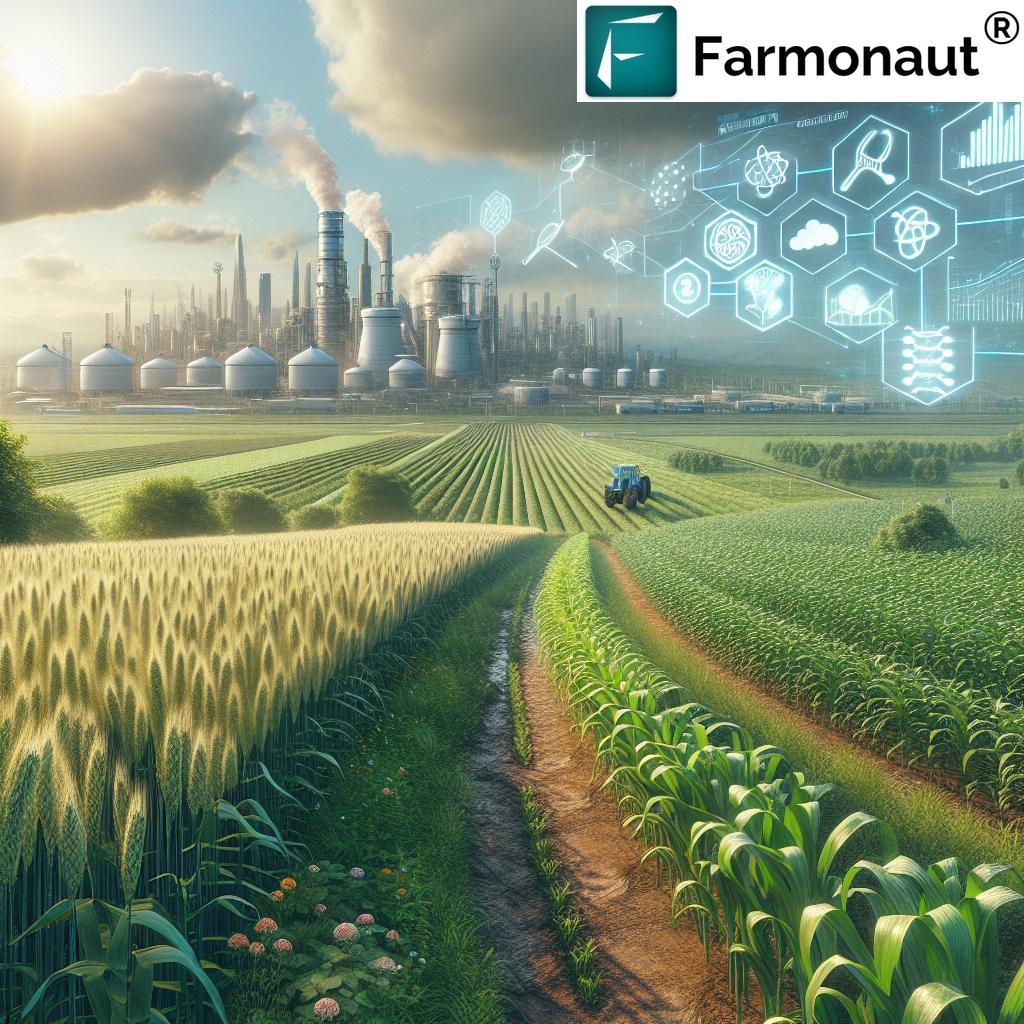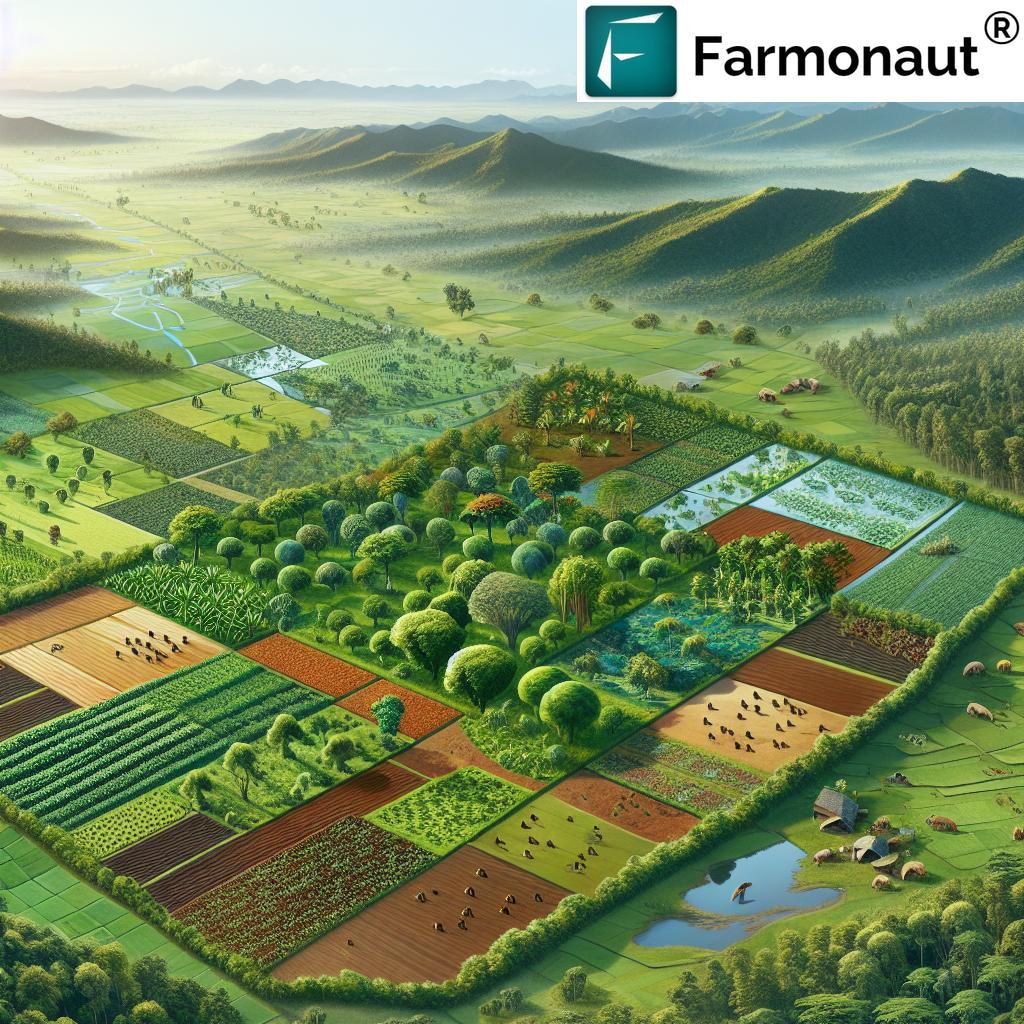Gene Editing: Shocking Agri Advances in China!
Table of Contents
Introduction: Gene Editing in Agriculture
As our global population rises and environmental challenges mount, agriculture stands at a crossroads. The need for enhancing crop yields, overcoming disease, and building farms resilient to climate change is more urgent than ever. Enter gene editing in agriculture—a game-changing advancement that offers the power to develop specific, intentional modifications directly in the DNA of plants and animals.
While traditional breeding methods for desired agricultural traits require extensive time and resources, gene editing—especially via revolutionary tools like CRISPR-Cas9—enables us to improve the genome with pinpoint precision. China has rapidly emerged as a global front-runner in CRISPR crop development and the application of gene editing to transform farming, forestry, and food security. In this blog, we’ll explore the shocked advances, breakthrough examples, and future prospects of gene editing in Chinese agriculture and beyond.
The Revolution: Gene Editing Technologies in Modern Agriculture
Let’s set the scene: gene editing is transforming how we improve crops and animals. The difference between traditional breeding methods and today’s gene editing comes down to precision, speed, and targetability. Whereas cross-breeding can take decades to produce a single new variety with desired traits, gene editing allows scientists to make specific genetic modifications—even in a single DNA letter (nucleotide).
The superstar of this movement is CRISPR—short for “Clustered Regularly Interspaced Short Palindromic Repeats”—which, when paired with the enzyme Cas9, acts like molecular scissors. This technology has revolutionized everything from agriculture and farming to forestry, enabling us to:
- Develop climate resilient crops that withstand drought, heat, and salinity
- Create disease resistant crops that require fewer chemical pesticides
- Enhance the nutritional value and functional contents of everyday plants
- Accelerate the creation of new crop varieties for improved yields and food security
- Advance sustainable farming practices that minimize environmental impacts
Nowhere is this revolution more visible than in China, where the government’s proactive approval of gene edited wheat varieties, CRISPR rice, and many others has positioned the nation at the vanguard of agricultural biotechnology.
Advancements in Crop Improvement in China
Traditional breeding methods often require extensive time and resources to develop crops with desired traits. In contrast, gene editing accelerates this process, allowing scientists to make specific genetic changes that would be time-consuming or even impossible via classical cross-breeding.
Examples of CRISPR Crop Development
- Gene edited wheat varieties: Researchers have utilized CRISPR to create wheat with reduced gluten content (Wikipedia). This caters to individuals with gluten sensitivities without sacrificing yield or taste.
- Enhanced nutritional value in tomatoes: Gene editing has produced tomato varieties with higher levels of antioxidants—for example, increased lycopene—enhancing their health benefits.
- CRISPR-edited rice in China: Field trials have shown up to a 30% yield boost in genetically modified rice, proving the potential of gene editing for improving food security.
- Soybeans & Corn with improved traits: Chinese scientists now use CRISPR and similar technologies to develop soybeans and corn with higher oil content, better flavor, or superior resistance to environmental stressors.
Such rapid improvement is vital not only for China’s agricultural productivity but also for sustainability and international food security.
How Farmonaut Helps Accelerate Crop Improvement
Farmonaut’s satellite-based monitoring empowers researchers and farmers to track the health and growth patterns of newly developed crop varieties in real time. By integrating these insights into field trials of gene-edited crops, scientists can observe the effects of specific genetic changes quickly and accurately.
- Identify areas where gene-edited varieties are outperforming conventional ones
- Access NDVI, soil moisture analytics, and crop vigor maps to make better data-driven decisions
- Reduce resources spent on manual field scouting initiatives
Try Farmonaut’s crop health monitoring now – available on Android, iOS, and web.
Enhancing Pest and Disease Resistance
Crop losses due to pests and diseases are a significant concern for farmers worldwide. Traditionally, farmers have relied on heavy applications of chemical pesticides—which can harm the environment, human health, and ultimately, the sustainability of food systems.
By leveraging gene editing in agriculture, scientists are developing crops with inherent resistance to a wide array of threats:
- Pests: New gene-edited crop varieties are engineered to produce natural deterrents or proteins that disrupt pest digestion, rendering the plants either unappealing or toxic to target insects.
- Diseases: CRISPR and similar tools introduce or strengthen genes that block infection by viruses, bacteria, or fungi, as documented by the Innovative Genomics Institute.
Benefits for Farmers and the Environment
- Reduces reliance on chemical pesticides, keeping harmful residues out of soil and water
- Promotes sustainable farming practices by enabling resistant crops to fend off common agricultural threats
- Enables higher yields and more reliable harvests, crucial for food security
For farmers in regions like China, where intense growing conditions and high population density compound the impact of pests and diseases, disease resistant crops developed via gene editing are a major solution. These breakthroughs are not only beneficial for Chinese agriculture, but inform global best practices for crop improvement.
With Farmonaut’s remote sensing tools, farmers can receive real-time pest/disease alerts and tailored advisory—crucial for maximizing the benefits of gene edited crops and ensuring a sustainable future.
Addressing Environmental Challenges: Climate Resilience in Agriculture
Climate change is one of the most substantial threats to global agriculture today. From extreme weather events (like droughts, floods, and heatwaves) to shifting climatic conditions and rising salinity, the ability to develop climate resilient crops is a cornerstone of worldwide food security.
Gene editing facilitates the creation of crops that can withstand:
- Drought: CRISPR-edited maize and rice in China are enabled to maintain productivity in water-limited conditions.
- Heat and Salinity: Wheat and rice have been developed with modifications that enable plants to survive heat stress, and thrive in saline soils.
For a country the size of China, with wide-ranging climatic zones and frequent natural disasters, the ability to develop climate resilient crops is critical for both domestic supply chains and exports.
Beyond crop development, Farmonaut’s carbon footprinting solutions are increasingly valuable. These tools allow farms and agribusinesses to monitor and reduce environmental impacts by analyzing real-time data on field emissions, soil carbon, and sustainable practices—all aligned with next-gen climate resilient agriculture.
Forestry Gene Editing Advancements
The impact of gene editing extends beyond agriculture to the forestry sector. Trees are essential not just as sources of wood products, but also for sequestering carbon and maintaining ecosystem health. CRISPR is now being used to make forestry gene editing advancements that target:
- Faster-growing, disease-resistant trees for better timber yield and sustainability
- Reduced lignin content (as demonstrated in poplar trees by North Carolina State University), enabling more energy-efficient processing for paper and biofuel products
- Improved environmental resilience to drought, pests, and climatic extremes
For China—home to rapidly expanding forestry industries—these technologies drive both ecological conservation and economic opportunity. The future of wood, paper, and biofuel production will be shaped by forestry gene editing advancements that target both productivity and sustainability.
For foresters and agri-companies seeking to streamline forest resource management, Farmonaut’s fleet tracking solutions help optimize machinery deployment, fuel use, and operations—supporting the sustainability goals that gene editing helps enable.
Regulatory and Ethical Considerations
As rapid as the science is advancing, regulatory and ethical frameworks are still catching up—both in China and globally. Gene editing in plants and animals raises questions about ecosystem impacts, intellectual property, and consumer acceptance.
Key Regulatory Developments:
- In the United States, the Department of Agriculture (USDA) has determined that certain gene-edited crops with changes possible by conventional breeding methods are not subject to additional regulation—a move that’s unlocked greater innovation.
- The European Union is currently debating banning patents on gene-edited crops to help farmers adapt to climate change and improve yields. However, this is sparking contentious discussion around innovation versus public good.
- China, meanwhile, has adopted a proactive stance by approving gene-edited wheat, rice, and corn for rapid deployment to boost food security and enable import reduction.
- The United Kingdom continues to press forward with its advanced gene editing legislation and policies for developing disease and climate-resilient crops, even as the European Union urges regulatory caution (Financial Times).
The ongoing global gene editing regulations debate shows that while the technology’s scientific potential is universally recognized, its social and commercial applications will continue to be shaped by diverse ethical and regulatory perspectives.
Farmers and agribusinesses benefit from Farmonaut’s blockchain-based traceability, which delivers transparency on product origin and supply chain authenticity—vital for stewardship, sustainability, and trust in regulatory environments.
China Leads: Global Gene Editing Initiatives in Agriculture
With over 9% of the planet’s arable land but nearly 20% of the world’s population, China faces a critical mission to optimize food security. Government policies have increasingly focused on bioresearch and the commercial scaling of gene edited crops to bridge these gaps.
- In 2024, China’s Ministry of Agriculture issued new guidelines to promote gene-editing tool development and biotech crop cultivation.
- The country has approved over 20 gene-edited crop varieties—from wheat and rice to soybeans and corn—for commercial planting since 2021.
- These advances are designed to enhance yields, improve disease resistance, cut reliance on imported grains, and create a resilient agri-food system for the future.
Meanwhile, other countries worldwide are investing in similar research, but few are proceeding as rapidly at the commercial scale as China—paving the way for solutions in global food security and sustainable agriculture.
Farmonaut’s Role: Supporting Precision Agriculture in the Age of Gene Editing
At Farmonaut, our mission is simple: make precision agriculture accessible and affordable worldwide. By integrating satellite-based insights, AI-driven advisory, blockchain traceability, and resource management tools, Farmonaut is helping farmers, agribusinesses, governments, and researchers realize the full benefits of gene editing in agriculture and emerging technologies.
How We Support the Gene Editing Revolution
- Satellite-Based Crop Monitoring: Our platform delivers near real-time NDVI and crop stress maps so that new gene-edited crops can be evaluated for yields, disease resistance, and adaptability in diverse field conditions.
- AI-Powered Advisory: Through Jeevn AI, we analyze satellite and environmental data to provide actionable advice on irrigation, nutrient application, pest/disease risk, and more.
- Blockchain Traceability: Farmonaut’s traceability solutions help secure the supply chain for gene-edited products—from field to market—by ensuring transparency and safety for both consumers and regulators.
- Carbon Footprinting: Our tools help measure, manage, and reduce the carbon impact of adopting new agri-technologies and gene-edited crops.
- Resource Management: Fleet and operational tools enable better machinery usage—saving cost while supporting new, high-yielding, and resilient crop programs.
- Accessible Apps & APIs: All of this is available via web and mobile apps as well as open APIs (developer docs here) for seamless integration.
For agri-entrepreneurs, Farmonaut’s large-scale farm management dashboards offer end-to-end oversight of new crop introductions, field trials, and operational efficiency as gene-edited varieties roll out nationwide.
And for those working in diversified agriculture, our satellite verification for crop loans and insurance makes obtaining financing for gene-edited crop adoption safer and easier than ever—addressing one more piece of the puzzle in this agri-tech revolution.
Comparative Benefits Table: Gene-Edited Crops in China
Here’s how different gene-edited crops in China powered by CRISPR crop development and other technologies are stacking up regarding yields, resistance, and climate resilience:
| Crop Type | Editing Technology Used | Estimated Yield Increase (%) | Disease Resistance Improvement | Climate Resilience | Year of Introduction |
|---|---|---|---|---|---|
| Rice | CRISPR-Cas9 | Up to 30% | High (Fungal & Bacterial) | Strong (Drought, Flooding) | 2021 |
| Wheat | CRISPR-Cas9 & TALENs | 10–18% | Medium–High (Rust, Powdery Mildew) | Moderate (Heat, Salinity) | 2022 |
| Corn | CRISPR-Cas9, ZFN | 12–19% | Moderate (Viral, Insect) | Strong (Drought) | 2023 |
| Soybean | CRISPR-Cas9 | 7–15% | Medium (Soybean Mosaic Virus) | Good (Variable Conditions) | 2022 |
| Tomato | CRISPR & RNAi | 8–14% | High (Mold, Rot) | Moderate (Heat) | 2021 |
These examples reflect the tangible value of gene editing in agriculture and how China leads global innovation on CRISPR crop development, enhancing crop yields, and building a truly secure future for food production.
Future Prospects of Gene Editing in Agriculture
Gene editing stands poised to answer some of the greatest challenges in agriculture and forestry—from climate change to pest outbreaks, food security, and resource depletion. Ongoing research in China and globally aims to:
- Refine gene-editing techniques so that they’re more precise, efficient, and accessible
- Expand the number and complexity of traits that scientists can target and enhance in plants and animals
- Ensure the safe, ethical, and transparent application of gene edited varieties in food systems
- Build collaborations that allow policymakers, farmers, and researchers to navigate regulatory, ethical, and commercial landscapes
- Use real-time data (like that provided by Farmonaut) for rapid impact assessments and feedback loops
China’s advances are not only important for its own food production but serve as a blueprint for sustainable farming practices and CRISPR crop development globally.
Start your journey towards smarter farming and global food security with Farmonaut’s unique blend of satellite, AI, and blockchain innovations—explore our web platform or download our Android / iOS app today!
FAQ: Gene Editing in Agriculture & China
What is gene editing in agriculture and how does it work?
Gene editing in agriculture is a technology that enables the intentional modification or deletion of specific DNA sequences in plants and animals to bring about desirable traits. CRISPR-Cas9 is one of the most widely used techniques, acting like molecular scissors to insert, remove, or tweak target genes.
What are the key benefits of gene editing in China’s agriculture?
China leverages gene editing to rapidly develop crop varieties that increase yields, show enhanced disease and pest resistance, are more resilient to climate change, and offer improved nutritional value. These help bolster food security and reduce reliance on imports.
Is gene editing safe for consumers and the environment?
Scientific consensus is that gene-edited crops made with precise, targeted changes (similar to natural mutations) can be as safe as conventionally bred crops. Regulatory oversight and ongoing research ensure safety for consumers and ecosystems.
Does gene editing mean all crops will be genetically modified organisms (GMOs)?
Not all gene edited crops are classified as GMOs under every regulatory regime. Many gene-editing techniques only make changes that could occur naturally or through cross-breeding, so they’re often regulated differently than transgenic GMOs.
How does Farmonaut support advances in gene editing?
Farmonaut provides remote crop monitoring, AI-based advisory, blockchain-based traceability, resource management, and sustainability tools—all aiding farmers, researchers, and agribusinesses to maximize the potential of gene-edited crops. Learn more about our web/mobile platform or API solutions.
Conclusion: The Gene Editing Revolution in Agriculture
In summary, gene editing in agriculture—especially as championed by China—is revolutionizing how we develop crops for higher yields, better disease resistance, and stronger climate resilience. As regulatory frameworks adapt and ethical questions are addressed, this technology promises to reshape the landscape of global food production, forestry, and sustainability.
At Farmonaut, we are proud to provide the technological backbone—satellite-based crop health, AI advisory, blockchain transparency, and resource tools—that empowers agricultural stakeholders to thrive in this new era.
Ready to transform your approach to agriculture? Explore our app and harness the promise of gene-editing, sustainability, and precision farming for a better future.












